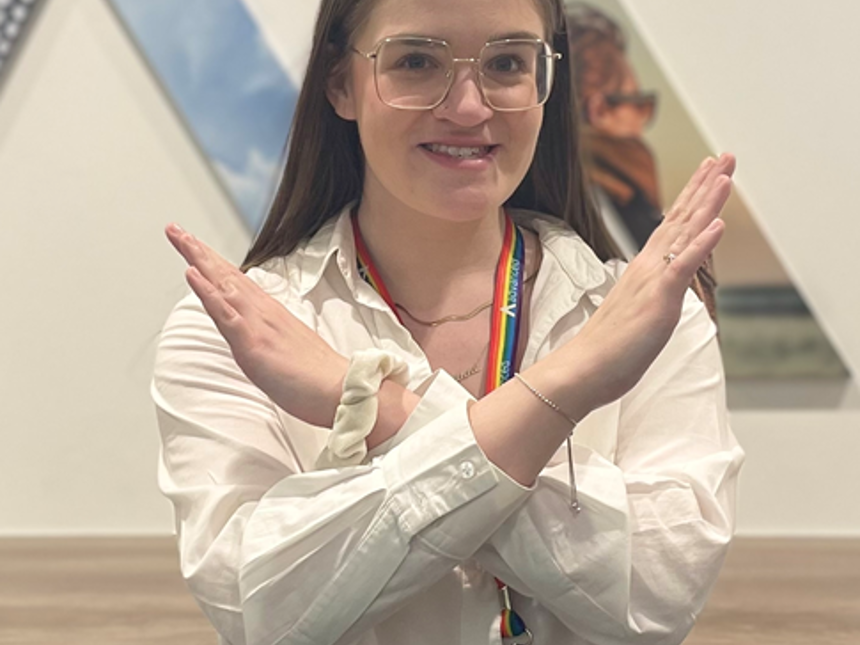
Joined in: July 2021
Job title: Senior Talent Partner & Co-chair of the Advanced Women's Network
#BreakTheBias is this year’s theme for International Women’s Day, and it got me thinking: how do we “break the bias” here at Advanced for our people?
What are we doing, particularly in my world of talent, that enables women (and any underrepresented group really), to become more than they ever expected themselves to be? I’m glad to report that my musings and investigations turned out to be fruitful…
What is Advanced’s talent philosophy?
It can be broken down into three main components:
-
“We hire for potential”
-
“The recruitment process is designed for inclusion and equity”
-
“We promote at pace striving for 65% internal mobility”
How does our approach tackle unconscious bias?
Unconscious biases are the beliefs that we hold which are outside our conscious awareness and control. Unconscious bias is the sworn enemy of diversity and inclusion because people tend to inherit ideologies from their environment that are not always well-informed or politically correct. However, there are more effective ways than others in tacking this, and our talent philosophy is a great example.
1. “We hire for potential”
CVs are the biggest source of unconscious bias. Whether that’s the halo effect that comes into play when a candidate has worked for a certain company (so we assume they are automatically going to be competent at this role), or the stereotype bias when we see someone’s graduation date (and think they are too young or old for the role).
By removing them and letting candidates tell their own story we are preventing these unconscious biases from being applied in the first place. Current studies[1] suggest the current format of trying to “train” employees to be aware of their unconscious biases is causing more harm than good, as the point is that they as unconscious – as the name suggests!
2. “The recruitment process is designed for inclusion and equity”
As well as the aforementioned disregarding of CVs, our approach to psychometric testing is inclusive too. Our CCAT is a cognitive ability test looking at verbal, numerical and spatial reasoning as opposed to a situational judgement test. The latter assumes a certain response to a situation is better than another, and not just a matter of perception.
This reinforces affinity bias: where we gravitate toward people like ourselves in appearance, beliefs, and background – and research points to the fact that more diversity in a business leads to better profit and output. [2]
We also offer a modified version of the CCAT without the verbal reasoning section to reduce bias against candidates whose first language is not English, and those who may process the English language in a different way (such as members of the neurodivergent community).
3. “We promote at pace, striving for 65% internal mobility”
The personal growth offering we have here at Advanced means that our people can flourish and blossom into the best possible versions of themselves. From Advanced Learning to Future Managers, Clear Review to #IamRemarkable, there are so many personal development tools available to encourage that growth mindset, you just have to engage with them. Remember, nobody cares more about your career than you do.
I am proud to work for a company who is so ahead of the game when it comes to diversity and inclusion. This International Women’s Day I particularly want to shout out the many women we have here at Advanced who have broken the bias to become successful in the traditionally male-dominated tech industry. Keep breaking the bias!
[1] https://blogs.lse.ac.uk/businessreview/2021/03/24/is-unconscious-bias-training-still-worthwhile/
https://www.bbc.com/worklife/article/20210326-the-complicated-battle-over-unconscious-bias-training
https://www.beapplied.com/post/why-unconscious-bias-training-does-not-work
[2] https://www.accenture.com/_acnmedia/thought-leadership-assets/pdf/accenture-equality-equals-innovation-gender-equality-research-report-iwd-2019.pdf
https://www.mckinsey.com/insights/organization/~/media/2497d4ae4b534ee89d929cc6e3aea485.ashx
